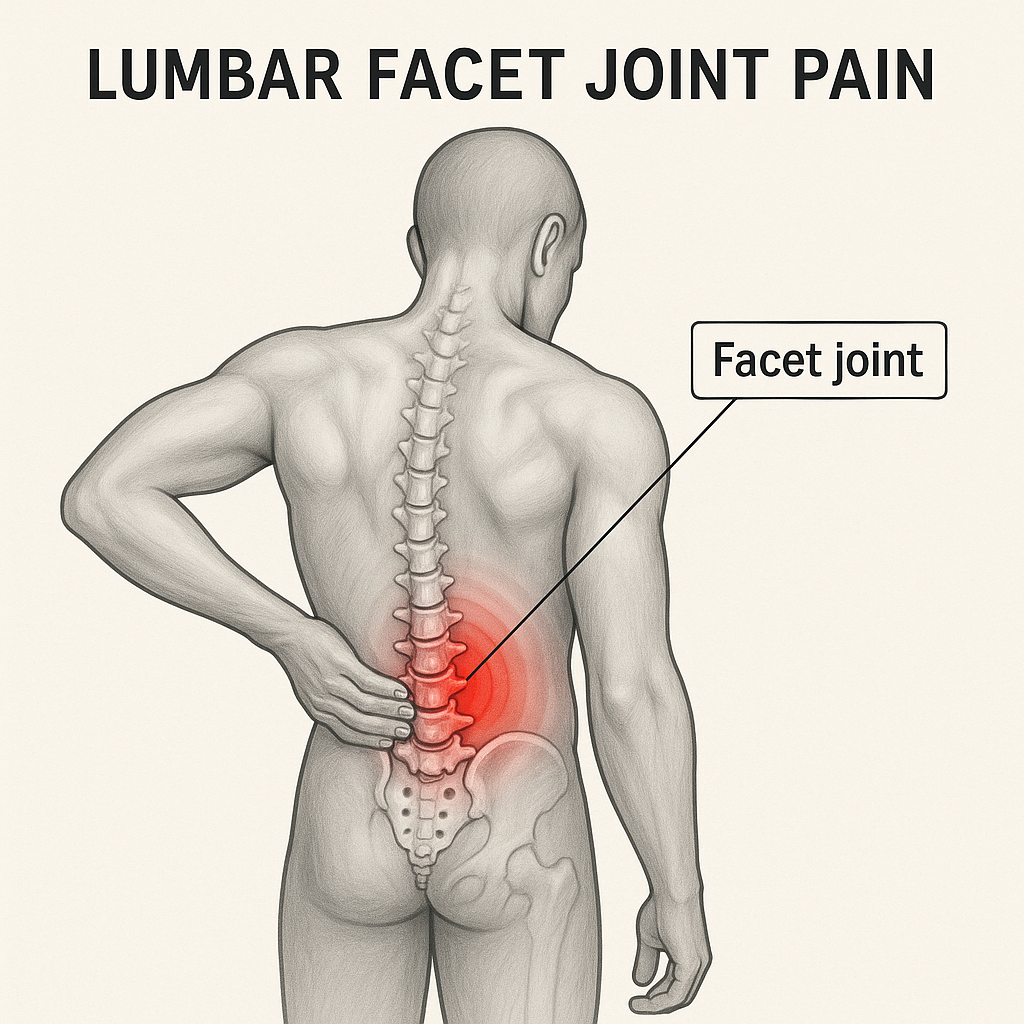What is Lumbar Facet Joint Pain?
Facet joints are small, paired joints located at the back of the spine. They help guide and stabilise spinal movement. When these joints become irritated, inflamed, or arthritic, they can cause pain in the lower back, often referred to as lumbar facet joint pain. This type of pain is usually mechanical, meaning it worsens with certain movements or postures, and may not be visible on standard scans unless specifically investigated. It is important to distinguish facet joint pain from myofascial pain, especially in patients
with conditions such as fibromyalgia or myofascial pain syndrome, where muscles and trigger points are the primary pain generators. These conditions are very common and
require a different interventional approach.

What are the symptoms?
You may experience:
- Aching or stiffness in the lower back, especially after standing or walking
- Pain on one side of the lower back, often localised and non-radiating
- Pain worsened by arching the back, twisting, or standing for long periods
- Temporary relief when sitting, lying down, or bending forward
- In some cases, associated buttock pain without leg radiation
How is it diagnosed?
Diagnosis is primarily clinical, based on:
- A detailed medical history and physical examination
- Identification of characteristic movement-related pain
- Imaging (such as MRI or CT scans) may be used to rule out any serious or structural causes of back pain. However, it is important to note that imaging findings often do not correlate with pain levels in facet joint-related problems.
- A diagnostic medial branch nerve block is often used to confirm the facet joints as the pain source
What treatments do we offer?
We provide a stepwise, evidence-based approach tailored to your needs. Treatments available at our clinic include:
1. Diagnostic Nerve Blocks for Lumbar Facet Joints
- A small amount of local anaesthetic is injected near the medial branch nerves, which carry pain signals from the facet joints
- This helps confirm whether the facet joints are the source of your pain
- It is a minimally invasive, outpatient procedure
2. Lumbar Facet Joint Radiofrequency Denervation (Rhizolysis)
- If the diagnostic block provides relief, we may offer radiofrequency treatment
- A special needle delivers controlled heat to the nerves, disrupting their ability to transmit pain
- Pain relief typically lasts 6–18 months, and the procedure can be repeated if effective
3. Trigger Point Injections
- For pain caused by muscle tension or spasm, especially in the upper trapezius or paraspinal muscles, we may offer trigger point injections
- These are especially useful when muscle tightness is a major contributor to pain
4. Medication Optimisation
- We review your current medications and help tailor a safe and effective plan
- We support reducing unnecessary or ineffective medication use
- Our clinic does not prescribe opioids or pregabalin; these must be managed by your GP
5. Self-Management & Rehabilitation Advice
- We support and guide you towards physiotherapy, activity pacing, and core strengthening
- These are essential for long-term improvement once pain is better controlled
What to expect from treatment
- Most patients report significant improvement in pain and function following the right combination of diagnostic and interventional care
- Treatments are minimally invasive and done as day procedures
- Repeat treatments may be considered depending on the response and recurrence of symptoms
